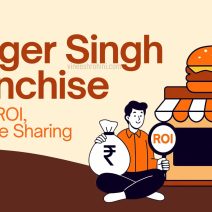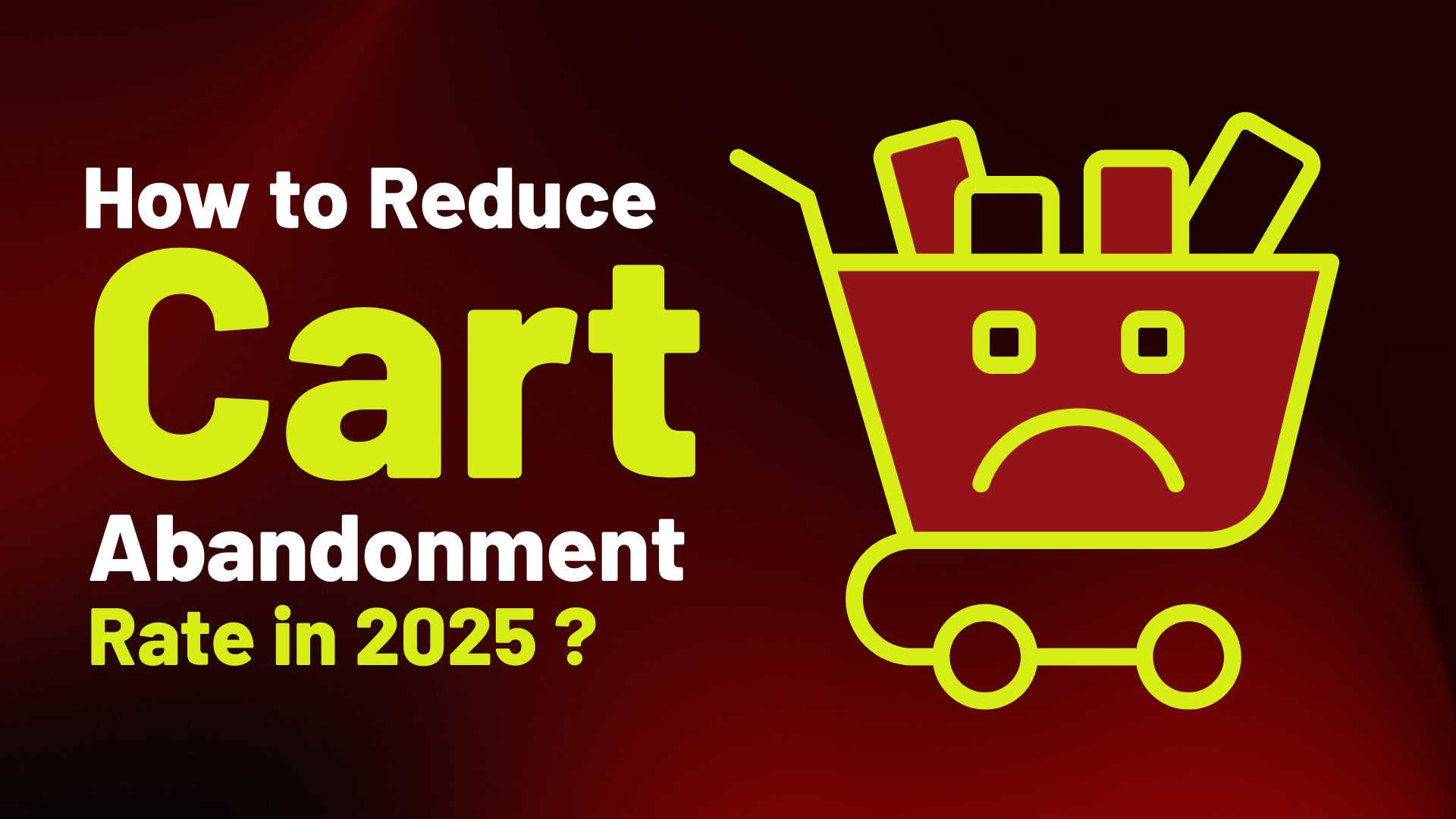How to Reduce Cart Abandonment Rate : In the fast-paced and highly competitive world of e-commerce, one of the most pressing challenges facing online retailers is cart abandonment. As we step into 2025, this issue remains a persistent hurdle, with global cart abandonment rates hovering around 70%, according to recent studies. That means for every ten potential buyers who add products to their cart, seven leave without completing the purchase. This staggering statistic represents a massive loss of potential revenue—but also an incredible opportunity.
Table of Contents
Understanding how to reduce cart abandonment rate in 2025 is not just about increasing sales—it’s about improving user experience, streamlining checkout processes, and building trust with your customers. In this comprehensive guide, we’ll explore the top reasons behind cart abandonment, emerging trends in consumer behavior, and 360-degree strategies to significantly reduce your cart abandonment rate and increase conversions in your e-commerce business.
What Is Cart Abandonment and Why Does It Matter in 2025?

Cart abandonment occurs when a shopper adds items to their online shopping cart but leaves the site without completing the transaction. In 2025, with more competition, smarter consumers, and a rising number of mobile shoppers, the issue is more complex than ever.
Also Read : How to Build a Branded eCommerce Store in 2025 ?
Cart abandonment hurts not just your revenue but also your customer acquisition cost (CAC), return on ad spend (ROAS), and lifetime customer value (LTV). Reducing cart abandonment rate is one of the highest-ROI activities you can invest in. A small percentage increase in conversion can lead to thousands—or even millions—more in annual revenue.
Top Reasons for Cart Abandonment in 2025
Before fixing the problem, you need to understand why users are abandoning carts. Here are the most common reasons as of 2025:
- Unexpected Costs at Checkout (Shipping, Taxes, Fees)
- Complicated or Lengthy Checkout Process
- Mandatory Account Creation
- Lack of Trust in Website or Payment Gateway
- Limited Payment Options
- Slow Website or App Performance
- Price Comparison or Window Shopping Behavior
- Lack of Mobile Optimization
- No Express Checkout Option
- No Clear Return Policy or Customer Support
High-Converting Strategies to Reduce Cart Abandonment in 2025
Display All Costs Upfront
One of the biggest cart abandonment triggers is surprise costs at checkout. In 2025, transparency is critical. Use price calculators that show total cost including taxes and shipping as early as the product page. Add a “Shipping Estimator” tool in the cart page to increase clarity and reduce user frustration.
Simplify Your Checkout Process
A complicated checkout flow with multiple steps, repeated data entry, or distractions will increase drop-offs. Implement a one-page checkout or progressive checkout experience. Use auto-fill for addresses and card info and eliminate unnecessary form fields that make the process longer than it needs to be.
Enable Guest Checkout Option
Forcing customers to create an account before purchasing is one of the top cart killers in e-commerce. Offer guest checkout as a default. You can still provide the option to create an account after the purchase is completed, especially with benefits like faster future checkout or order tracking.
Optimize for Mobile Commerce
Mobile shopping dominates in 2025, with over 65% of e-commerce traffic coming from smartphones. Ensure your website uses responsive design. Optimize button placement, tap targets, and implement mobile wallets like Apple Pay, Google Pay, Paytm, and PhonePe to speed up the checkout process.
Boost Site Speed and Performance
Slow-loading websites result in abandoned carts, especially on mobile. Every second counts. Use tools like Google PageSpeed Insights, GTmetrix, and Core Web Vitals optimization tools to monitor and improve site performance. Compress images, use lazy loading, and consider using a CDN to improve speed.
Use Exit-Intent Popups Smartly
Capture abandoning users with personalized offers just before they leave. Offer a limited-time discount or free shipping through popups that appear when users show exit intent. Use retargeting popups based on the specific items in their cart for a more personalized experience.
Send Cart Recovery Emails (Triggered and Smart)
Cart recovery emails are essential in 2025. They should be timely, personalized, and automated. Send the first email within one hour of abandonment, a second reminder within 24 hours, and consider adding urgency or offering a small discount. Include product images and direct links back to the saved cart.
Offer Multiple and Local Payment Methods
Lack of preferred payment options is a deal breaker, especially in international or regional markets. Include Credit/Debit Cards (Visa, MasterCard, Rupay), UPI, Buy Now Pay Later (BNPL) services like ZestMoney or Simpl, and popular digital wallets like PayPal, Paytm, and Google Pay.
Display Trust Signals and Security Badges
Security concerns lead to cart abandonment. Make shoppers feel safe by adding SSL certificates (HTTPS), payment security logos (PCI DSS Compliant, Verified by Visa), customer reviews, and trust badges directly on the checkout page.
Enable Save Cart or Wishlist Functionality

Not all shoppers are ready to buy now—but they might come back. Allow saving carts across devices and enable easy email sharing or login-based cart recall to help users pick up where they left off.
Offer Live Chat and Quick Support Options
Having instant help available can convert hesitant buyers. Use WhatsApp Business Chat, tools like Tidio or LiveChat, or integrate Facebook Messenger. AI-powered chatbots can also provide 24/7 assistance and answer common queries instantly.
Highlight Returns, Refunds, and Shipping Policy Clearly
Hidden or confusing policies drive shoppers away. Be upfront and user-friendly. Clearly display return options, estimated delivery dates, and easy-to-read summaries of your policies on both the cart and checkout pages.
Use Retargeting Ads on Social Media and Google
Bring shoppers back using smart retargeting based on their cart behavior. Use Dynamic Product Ads on Facebook and Instagram, Google Display Network for visual reminders, and YouTube pre-roll ads to stay top of mind with users who’ve abandoned their cart.
Implement Social Proof Throughout Checkout
Shoppers trust other shoppers. Adding real-time social proof builds urgency and trust. Use messages like “102 people bought this in the last 24 hours” or show customer reviews next to items in the cart.
Offer Time-Limited Discounts or Free Shipping Thresholds
Urgency is a powerful conversion booster when used right. Use countdown timers on the cart page or messages like “You’re ₹200 away from FREE shipping” to encourage users to complete their purchase.
Personalize the Checkout Experience
Use AI and customer data to personalize checkout based on user history or location. Recommend frequently bought items, auto-fill user preferences from previous purchases, and show location-specific delivery or payment options.
Reduce Distractions During Checkout
Keep users focused. Use a clean, minimal checkout layout and remove unnecessary links, menus, or sidebars. Disable unrelated popups or promotional banners during the checkout flow to prevent distraction or abandonment.
Emerging Technologies to Watch for Cart Abandonment Reduction in 2025
Voice commerce is on the rise. Voice-enabled checkout using Alexa or Google Assistant will soon become a norm for convenience-focused users. AI chatbots can now detect hesitation or confusion in real-time and offer assistance or discounts to prevent abandonment. Augmented Reality (AR) lets users visualize products in their space, which builds confidence and reduces returns and abandoned carts. Hyper-personalized email sequences powered by machine learning can adjust messaging, discounts, or even product recommendations in real time to recapture lost sales.
Key Metrics to Track for Cart Abandonment Reduction
Cart Abandonment Rate = (1 – Completed Orders / Shopping Carts Created) × 100
Checkout Abandonment Rate
Average Session Duration
Drop-off Points (via heatmaps or analytics)
Recovery Rate via Email/Ads
Bounce Rate on Cart Page
Use tools like Google Analytics 4, Hotjar, Mixpanel, and Klaviyo to track these metrics. Optimization should be based on real-time user behavior, not just best practices.
How to Reduce Cart Abandonment Rate – Conclusion:

Cart abandonment is not a dead end—it’s an opportunity to refine your e-commerce funnel. With the right strategies, tools, and a customer-first mindset, you can turn abandoned carts into completed sales.
Buy Now : Ecommerce Website With 100 Products
In 2025, personalization, trust, and seamless experiences are more important than ever. Invest in data, optimize your checkout flow, and build automated recovery systems. Not only will your cart abandonment rate drop, but your revenue, customer satisfaction, and brand loyalty will soar.
Disclaimer : This blog post is based on e-commerce trends and user behavior insights relevant to the year 2025. Results may vary depending on the industry, product type, user demographic, and marketing strategy. Always A/B test and analyze your specific metrics before applying any large-scale changes.
Keywords : How to Reduce Cart Abandonment Rate – How to Reduce Cart Abandonment Rate 2025









